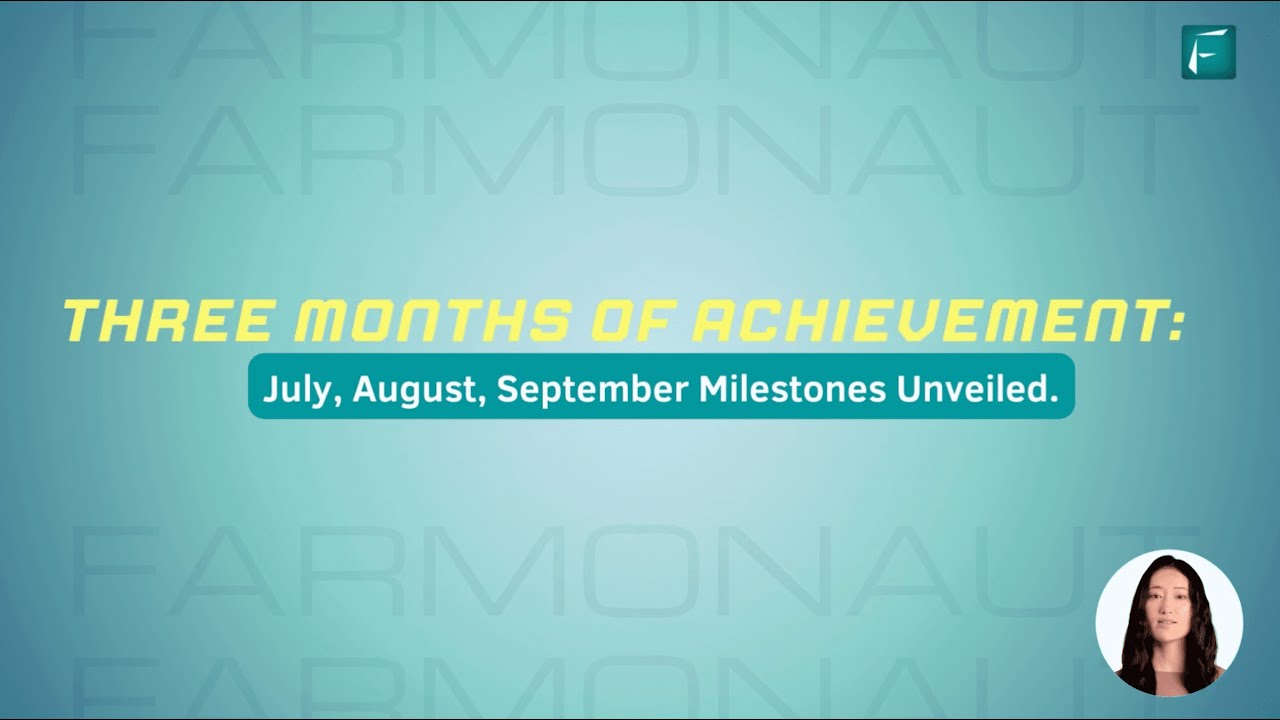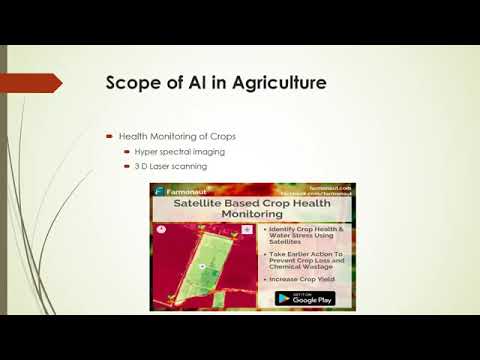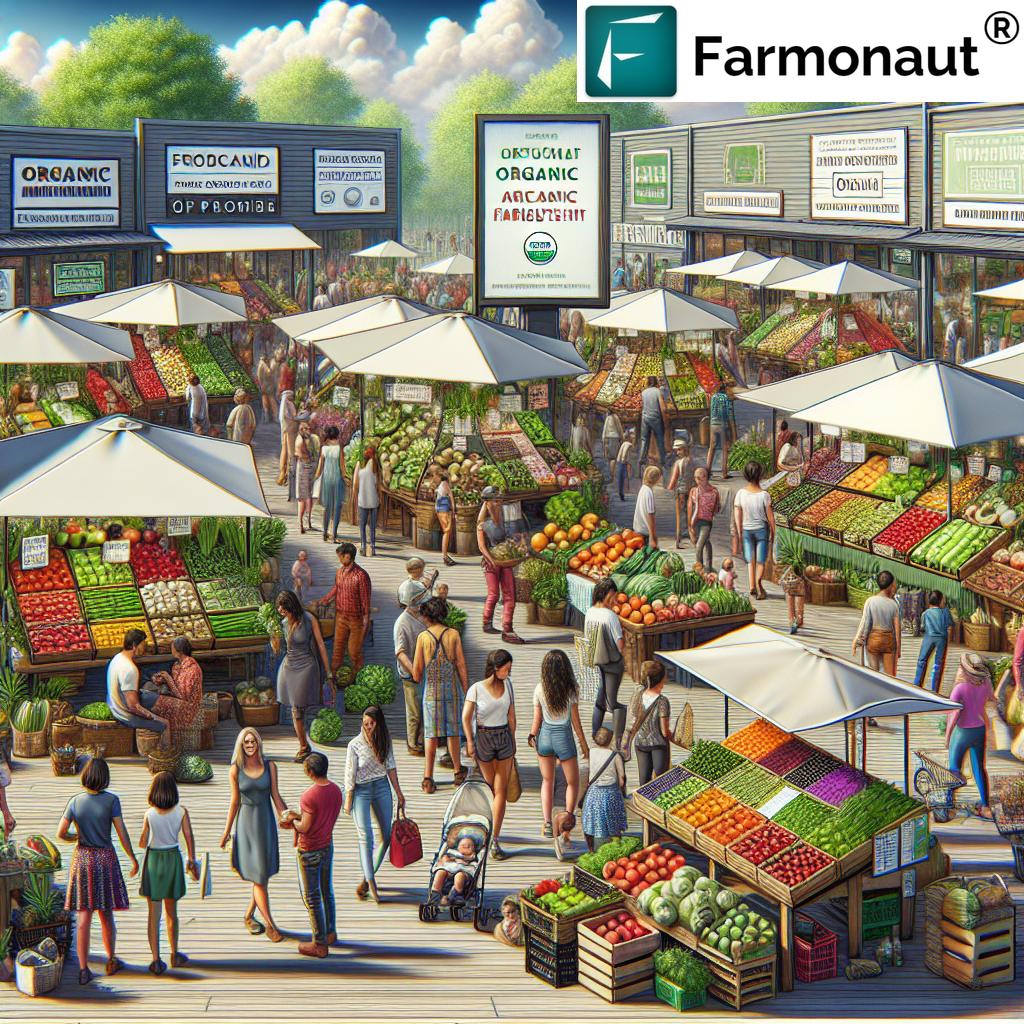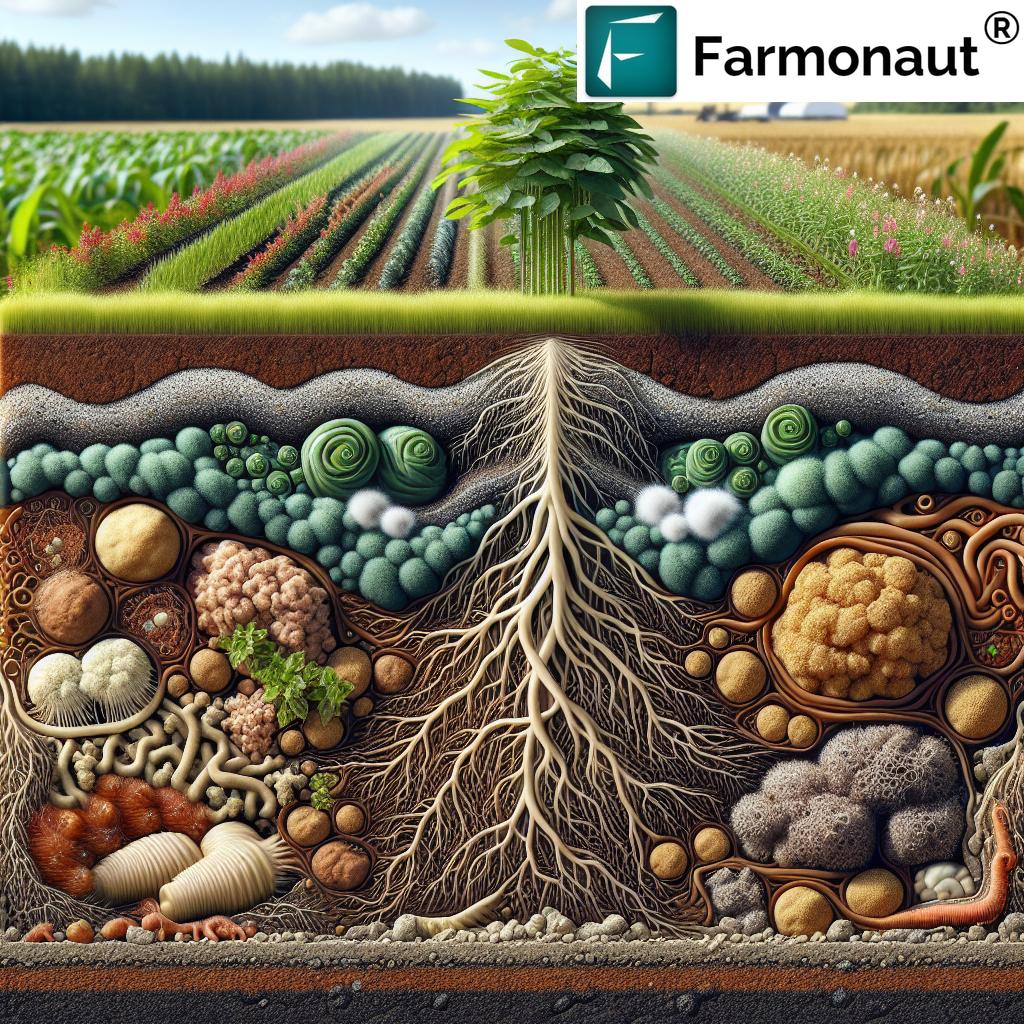Global Wheat Market Trends: How Supply Tightening and Demand Shifts Impact Grain Prices in 2024
“European wheat production hits a 12-year low in 2024, significantly impacting global grain exports.”
As we delve into the intricate world of global wheat market trends, it’s crucial to understand the complex interplay of factors shaping agricultural commodity prices in 2024. The wheat market, a cornerstone of global food security, is experiencing significant shifts in supply and demand dynamics, with far-reaching implications for farmers, buyers, and consumers worldwide.
In this comprehensive analysis, we’ll explore how supply tightening and demand shifts are impacting grain prices, and examine the role of smart farming solutions and precision agriculture technology in navigating these fluctuations. Our focus will be on providing valuable insights for sustainable crop production in this evolving landscape, helping you stay informed and prepared for the future of wheat farming.
The Current State of Global Wheat Supply and Demand
The global wheat market in 2024 is characterized by a delicate balance between supply constraints and growing demand. Let’s break down the key factors influencing this dynamic:
- European Production Dip: European wheat production has plummeted to a 12-year low, significantly impacting international grain exports. This unexpected downturn has sent ripples through the global market, tightening supply and putting upward pressure on prices.
- Increased U.S. Sales: In response to the European shortfall, the United States has seen a surge in wheat sales, stepping up to fill the gap in the global supply chain.
- Rising Global Consumption: Worldwide wheat consumption continues to outpace production, intensifying the need for accurate crop yield forecasting and efficient resource management.
To better illustrate these trends, let’s examine a comprehensive overview of the global wheat supply and demand situation:
| Region | Production (million metric tons) | Consumption (million metric tons) | Net Export/Import (million metric tons) |
|---|---|---|---|
| Europe | 125 | 120 | +5 |
| United States | 50 | 30 | +20 |
| Russia | 85 | 40 | +45 |
| China | 135 | 140 | -5 |
| India | 110 | 105 | +5 |
| Egypt | 9 | 20 | -11 |
| Global Total | 780 | 785 | -5 |
This table provides a snapshot of the current global wheat market, highlighting the production shortfalls in key regions and the resulting impact on international trade flows. As we can see, the global balance sheet shows a slight deficit, with consumption exceeding production by 5 million metric tons.
Factors Influencing Supply Tightening
Several factors have contributed to the tightening of global wheat supply in 2024:
- Adverse Weather Conditions: Extreme weather events, including droughts and floods in major wheat-producing regions, have significantly impacted crop yields.
- Geopolitical Tensions: Trade disputes and export restrictions have disrupted traditional supply chains, leading to uncertainty in the market.
- Reduced Acreage: Some farmers have shifted to more profitable crops, resulting in a decrease in wheat cultivation areas.
- Climate Change: Long-term climate trends are affecting growing conditions and increasing the frequency of extreme weather events.
These supply constraints have led to a reduction in global wheat stocks, with the USDA projecting lower ending stocks for the 2023/24 marketing year. This tightening of supply has been a key driver in the upward trajectory of wheat prices.

Demand Shifts and Their Impact
While supply has been tightening, demand for wheat has been undergoing significant shifts:
- Population Growth: The world’s growing population continues to drive increased demand for wheat-based products.
- Changing Dietary Habits: As developing countries experience economic growth, there’s a shift towards more wheat-based diets.
- Industrial Uses: Non-food applications of wheat, such as biofuels and industrial products, are expanding, further increasing demand.
- Livestock Feed: With rising meat consumption, the use of wheat as animal feed has grown, particularly in regions facing corn shortages.
These demand shifts have put additional pressure on the already strained global wheat supply, contributing to price volatility and creating challenges for both producers and consumers.
The Role of Precision Agriculture in Navigating Market Fluctuations
In the face of these market challenges, precision agriculture technology has emerged as a crucial tool for farmers and agribusinesses. Smart farming solutions offer valuable insights and capabilities that can help navigate the complexities of the global wheat market:
- Crop Yield Forecasting: Advanced satellite-based monitoring systems, like those offered by Farmonaut, provide accurate and timely crop yield forecasts, enabling farmers to make informed decisions about planting and harvesting.
- Resource Optimization: Precision agriculture tools help farmers optimize the use of water, fertilizers, and pesticides, reducing input costs and improving profitability even in challenging market conditions.
- Risk Management: By providing real-time data on crop health and weather conditions, agtech solutions enable farmers to mitigate risks associated with climate variability and market fluctuations.
- Market Intelligence: Integration of market data with farm-level information allows for better decision-making regarding crop selection, timing of sales, and pricing strategies.
Farmonaut’s suite of precision agriculture tools, including satellite-based crop health monitoring and AI-driven advisory systems, are particularly well-suited to help farmers navigate these complex market dynamics.
Impact on International Buyers and Opportunities for Farmers
The shifting landscape of the global wheat market has significant implications for international buyers and creates new opportunities for farmers:
For International Buyers:
- Diversification of Sources: With traditional export regions like Europe facing production challenges, buyers are looking to diversify their sources of wheat imports.
- Long-term Contracts: To secure supply in a volatile market, many buyers are seeking long-term purchase agreements with producers.
- Quality Focus: As supply tightens, there’s an increased emphasis on quality, with buyers willing to pay premiums for high-grade wheat.
- Technology Adoption: International buyers are increasingly utilizing digital platforms and blockchain-based traceability solutions to ensure transparency and efficiency in their supply chains.
Opportunities for Farmers:
- Premium Markets: Farmers who can consistently produce high-quality wheat have opportunities to access premium markets and secure better prices.
- Technology Integration: Adopting precision agriculture technologies can help farmers improve yields, reduce costs, and better align their production with market demands.
- Direct Marketing: Digital platforms are enabling farmers to connect directly with international buyers, potentially increasing profit margins.
- Sustainable Practices: As sustainability becomes a key concern for buyers, farmers implementing environmentally friendly practices may gain a competitive edge.
To capitalize on these opportunities, farmers can leverage tools like Farmonaut’s satellite-based farm management solutions to optimize their production and make data-driven decisions.

“Global wheat consumption is outpacing production, intensifying the need for accurate crop yield forecasting.”
The Future of Wheat Farming: Strategies for Success
As we look towards the future of wheat farming in this dynamic global market, several strategies emerge as key to success:
- Embrace Technology: Investing in precision agriculture tools and smart farming solutions can significantly improve productivity and profitability. Farmonaut’s platform offers a range of features designed to help farmers optimize their operations:
- Real-time crop health monitoring
- AI-based advisory systems
- Weather forecasting and alerts
- Resource management tools
- Focus on Sustainability: Implementing sustainable farming practices not only benefits the environment but can also lead to cost savings and access to premium markets. Consider:
- Conservation tillage
- Crop rotation
- Integrated pest management
- Water-efficient irrigation systems
- Diversify Crop Portfolio: While wheat remains a crucial crop, diversifying into other grains or complementary crops can help mitigate market risks.
- Engage in Forward Contracting: Utilizing forward contracts can provide price certainty and help manage market volatility.
- Invest in Storage: Having adequate storage facilities allows farmers to hold their crop and sell when market conditions are more favorable.
- Participate in Farmer Networks: Joining agricultural cooperatives or farmer networks can provide access to shared resources, market information, and collective bargaining power.
By adopting these strategies and leveraging advanced agtech solutions like those offered by Farmonaut, wheat farmers can position themselves for success in the evolving global market.
The Role of Agtech Innovations in Sustainable Crop Production
As the global wheat market continues to evolve, agtech innovations play an increasingly crucial role in ensuring sustainable crop production. Farmonaut’s cutting-edge technologies offer a range of solutions to address the challenges faced by wheat farmers:
- Satellite-Based Crop Health Monitoring: By utilizing multispectral satellite imagery, Farmonaut provides farmers with real-time insights into vegetation health (NDVI), soil moisture levels, and other critical metrics. This data enables farmers to make informed decisions about irrigation, fertilizer usage, and pest management, ultimately optimizing crop yields and reducing resource wastage.
- AI-Driven Advisory Systems: Farmonaut’s Jeevn AI delivers personalized farm advisory services, including real-time insights, weather forecasts, and expert crop management strategies. By analyzing satellite data and other inputs, Jeevn AI generates customized advice to improve farm productivity and efficiency.
- Blockchain-Based Traceability: For farmers looking to tap into premium markets, Farmonaut’s blockchain technology enables end-to-end traceability of wheat production. This transparency can lead to better prices and increased trust from buyers.
- Resource Management Tools: Farmonaut’s platform includes features for efficient management of farm resources, including fleet management for larger operations. These tools help reduce operational costs and improve overall farm management.
- Carbon Footprint Tracking: As sustainability becomes increasingly important in agriculture, Farmonaut offers carbon footprint tracking capabilities. This feature allows farmers to monitor and reduce their environmental impact, potentially opening up new market opportunities.
By leveraging these agtech innovations, wheat farmers can not only improve their productivity and profitability but also contribute to more sustainable agricultural practices on a global scale.
Navigating Price Volatility in the Wheat Market
Price volatility remains a significant challenge in the global wheat market. Here are some strategies for farmers to navigate these fluctuations:
- Stay Informed: Regularly monitor global wheat market trends, including production estimates, consumption patterns, and trade flows. Farmonaut’s platform can provide valuable market intelligence to support decision-making.
- Utilize Hedging Strategies: Consider using futures contracts or options to protect against adverse price movements.
- Improve Storage Capabilities: Having the ability to store wheat allows farmers to hold their crop during periods of low prices and sell when market conditions improve.
- Explore Value-Added Products: Consider processing wheat into value-added products to capture additional market opportunities and reduce exposure to raw commodity price fluctuations.
- Leverage Technology for Marketing: Use digital platforms and social media to connect directly with buyers and potentially secure better prices for your wheat.
By combining these strategies with the advanced crop monitoring and management capabilities offered by Farmonaut, wheat farmers can better position themselves to thrive in a volatile market environment.
The Impact of Climate Change on Wheat Production
Climate change is having a profound impact on global wheat production, presenting both challenges and opportunities for farmers:
- Shifting Growing Zones: As temperatures rise, traditional wheat-growing regions are changing, with some areas becoming less suitable and new regions opening up for cultivation.
- Increased Weather Variability: More frequent extreme weather events, such as droughts, floods, and heatwaves, are affecting wheat yields and quality.
- Changes in Pest and Disease Patterns: Warmer temperatures are altering the distribution and lifecycle of pests and diseases that affect wheat crops.
- Water Stress: Many wheat-growing regions are experiencing increased water stress, necessitating more efficient irrigation practices.
To address these challenges, farmers can utilize Farmonaut’s advanced satellite monitoring and AI-driven advisory systems to:
- Track changes in local climate patterns and adjust planting schedules accordingly
- Identify early signs of water stress or pest infestations for prompt intervention
- Implement precision irrigation techniques to conserve water
- Explore climate-resilient wheat varieties suited to changing conditions
By leveraging these technologies, wheat farmers can enhance their resilience to climate change and maintain sustainable production in the face of environmental challenges.
The Future of Global Wheat Trade
As we look towards the future of global wheat trade, several key trends are emerging that will shape the market landscape:
- Shift in Major Exporters: Traditional wheat-exporting powerhouses may see their market share change due to climate impacts and geopolitical factors. New players may emerge in the global wheat trade.
- Increased Emphasis on Quality: With supply tightening, there’s likely to be a greater focus on wheat quality, with premiums for high-protein, disease-resistant varieties.
- Digital Trade Platforms: The adoption of blockchain and other digital technologies is expected to streamline international wheat trade, improving transparency and reducing transaction costs.
- Sustainable Sourcing: Growing consumer awareness of environmental issues may lead to increased demand for sustainably produced wheat, creating new market opportunities for eco-conscious farmers.
- Regional Trade Agreements: New trade agreements and partnerships may reshape wheat trade flows, potentially opening up new markets for producers.
Farmers who stay informed about these trends and adapt their production and marketing strategies accordingly will be best positioned to succeed in the evolving global wheat market. Farmonaut’s comprehensive suite of tools can provide valuable support in navigating these changes, from optimizing production to connecting with international buyers.
Conclusion: Embracing Innovation for a Sustainable Wheat Future
As we’ve explored throughout this analysis, the global wheat market is undergoing significant changes, driven by supply tightening, demand shifts, and the impacts of climate change. These challenges present both risks and opportunities for farmers, buyers, and other stakeholders in the wheat industry.
The key to navigating this complex landscape lies in embracing innovation and leveraging cutting-edge technologies. Precision agriculture tools, such as those offered by Farmonaut, provide farmers with the insights and capabilities needed to optimize production, manage resources efficiently, and make informed decisions in response to market fluctuations.
By combining advanced satellite monitoring, AI-driven advisory systems, and blockchain-based traceability solutions, Farmonaut empowers farmers to:
- Improve crop yields and quality
- Reduce input costs and environmental impact
- Enhance resilience to climate change
- Access new market opportunities
- Make data-driven decisions for long-term sustainability
As we look to the future of wheat farming, it’s clear that those who embrace these technological advancements and adapt to changing market conditions will be best positioned for success. By leveraging the power of agtech innovations, we can work towards a more sustainable, efficient, and resilient global wheat market that benefits producers, consumers, and the planet alike.
To start your journey towards smarter, more sustainable wheat farming, explore Farmonaut’s suite of precision agriculture solutions:
For developers interested in integrating Farmonaut’s powerful satellite and weather data into their own applications, check out our API and API Developer Docs.
Farmonaut Subscriptions
Frequently Asked Questions (FAQ)
- How is the global wheat market expected to evolve in 2024?
The global wheat market in 2024 is characterized by tightening supply, particularly due to reduced European production, and increasing demand driven by population growth and changing dietary habits. This dynamic is likely to keep prices volatile and potentially higher than in previous years. - What are the main factors contributing to the supply tightening in the wheat market?
Key factors include adverse weather conditions in major producing regions, geopolitical tensions affecting trade, reduced acreage devoted to wheat cultivation, and the long-term impacts of climate change on growing conditions. - How can precision agriculture help wheat farmers navigate market fluctuations?
Precision agriculture tools, such as those offered by Farmonaut, provide farmers with real-time data on crop health, weather conditions, and market trends. This information enables more efficient resource use, better yield forecasting, and informed decision-making regarding planting, harvesting, and selling strategies. - What opportunities does the current market situation present for wheat farmers?
The tightening supply creates opportunities for farmers to access premium markets, especially for high-quality wheat. There’s also increased potential for direct marketing to international buyers and adoption of sustainable practices to meet growing demand for environmentally friendly products. - How is climate change impacting wheat production globally?
Climate change is causing shifts in growing zones, increased weather variability, changes in pest and disease patterns, and water stress in many wheat-producing regions. These factors are challenging traditional farming practices and necessitating adaptation strategies. - What role does technology play in sustainable wheat production?
Technologies like satellite-based crop monitoring, AI-driven advisory systems, and blockchain-based traceability solutions are crucial for optimizing resource use, improving yield predictions, and ensuring transparency in the supply chain. These innovations contribute to more sustainable and efficient wheat production. - How can farmers best prepare for future changes in the global wheat market?
Farmers can prepare by staying informed about market trends, diversifying their crop portfolio, investing in precision agriculture technologies, implementing sustainable farming practices, and exploring new marketing channels and value-added opportunities. - What are the benefits of using Farmonaut’s platform for wheat farming?
Farmonaut’s platform offers real-time crop health monitoring, AI-based advisory services, weather forecasting, and resource management tools. These features help farmers optimize their operations, reduce costs, improve yields, and make data-driven decisions in response to market conditions.
By staying informed about these key aspects of the global wheat market and leveraging advanced agricultural technologies, farmers can position themselves for success in an increasingly complex and challenging environment.




















